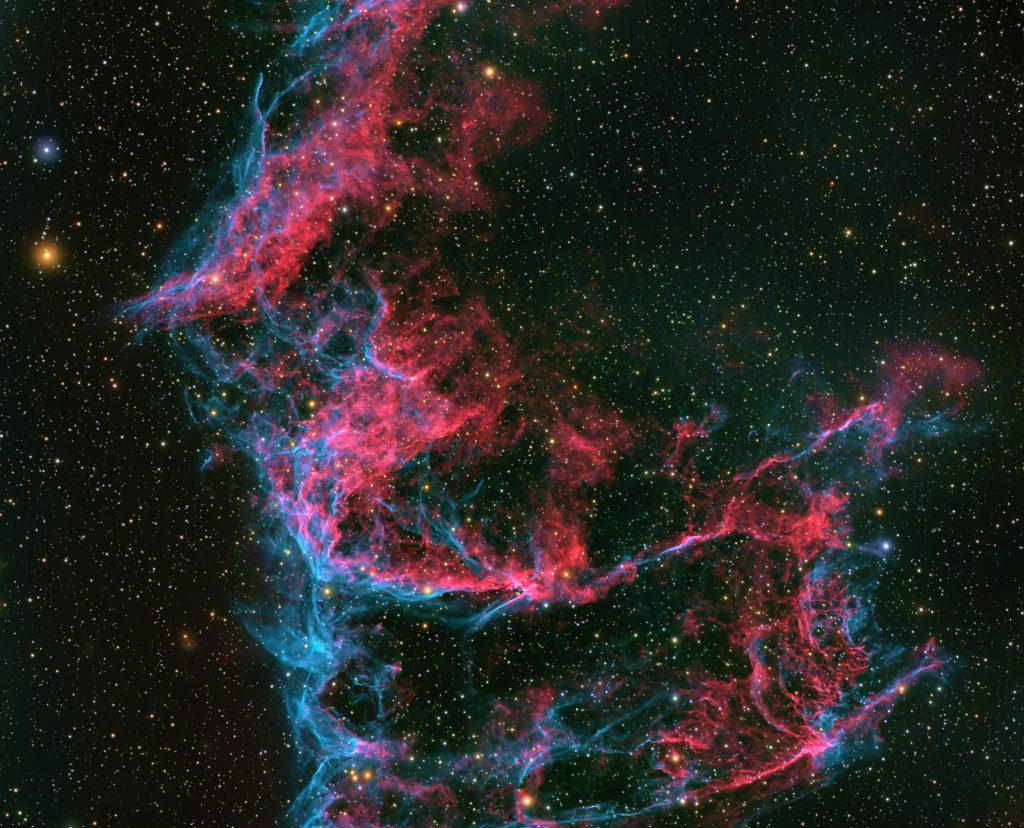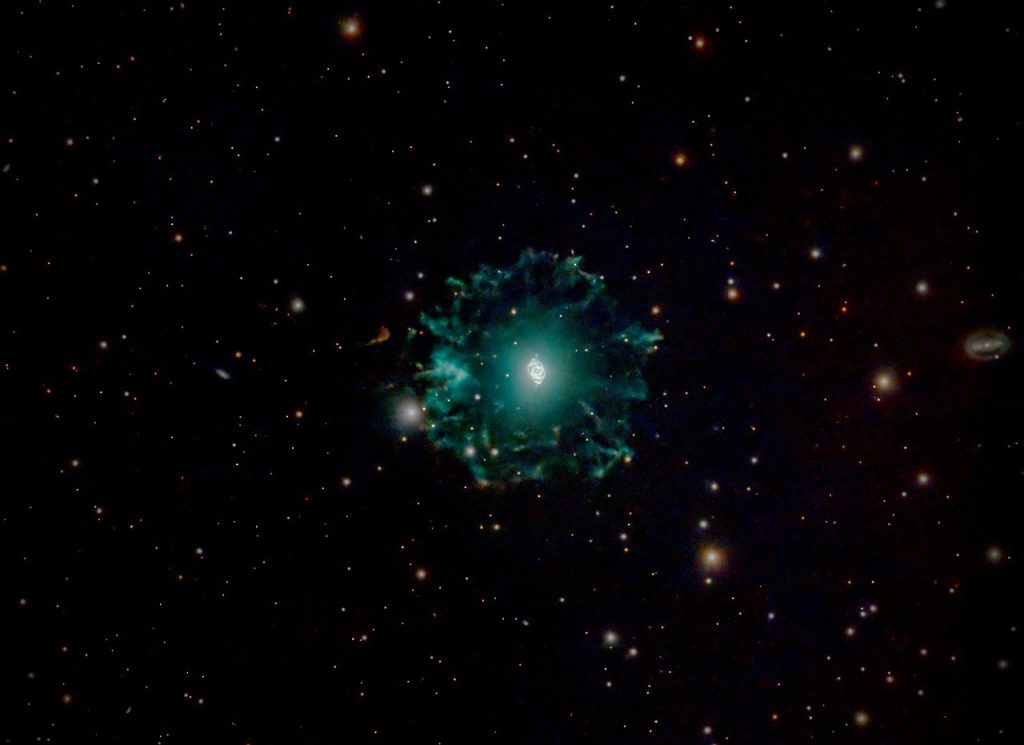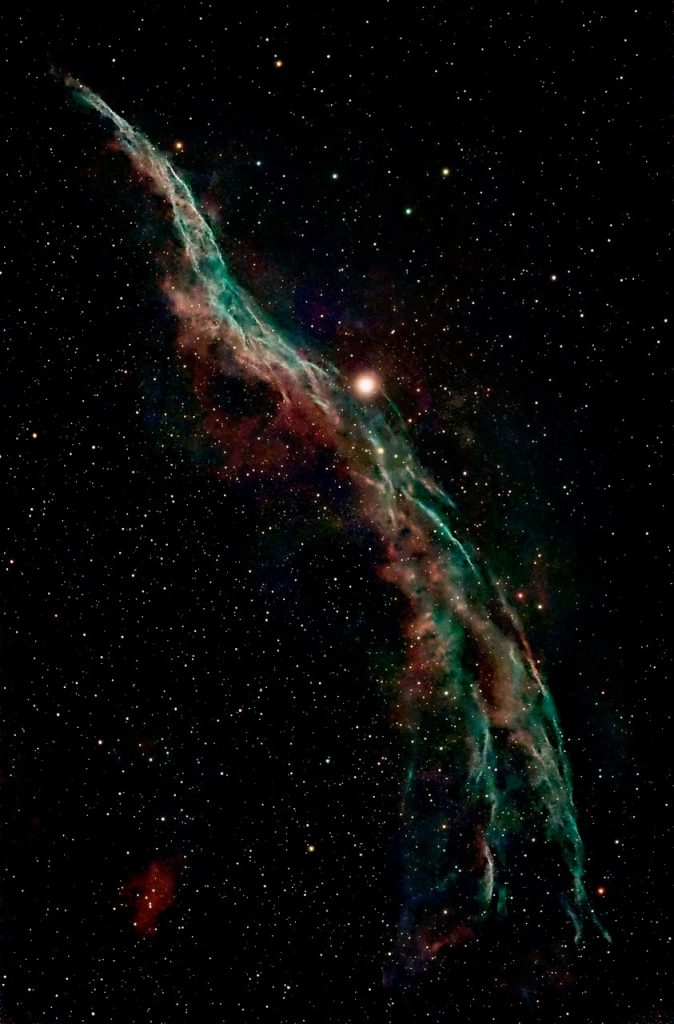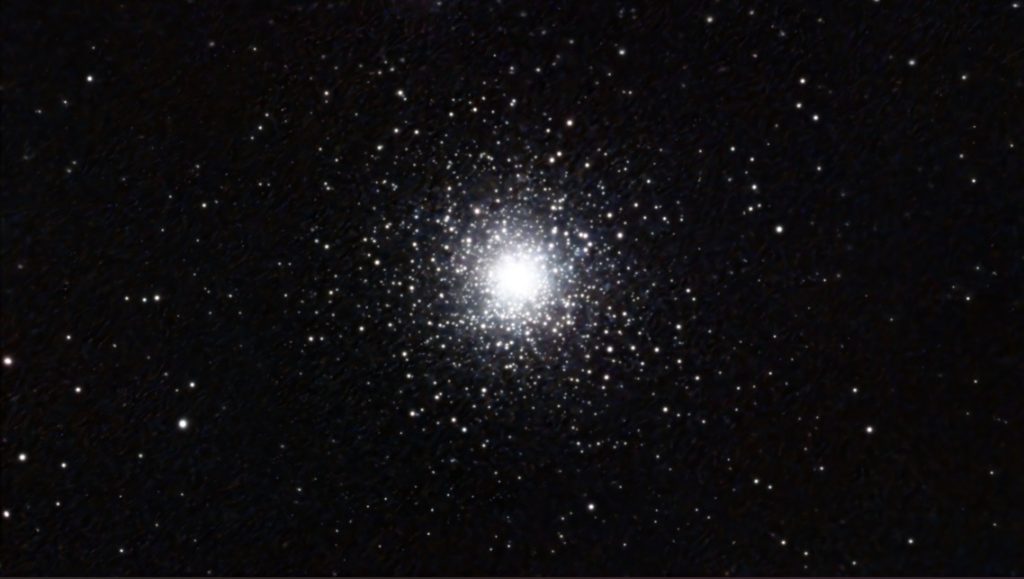SAS Astronomy Pictures of the Month [October, 2025]
Remnants of Exploding Stars in Cygnus, Cepheus and Draco!
The Veil Nebula is a large supernova remnant in the constellation Cygnus, formed by the explosive death of a massive star around 10,000–20,000 years ago. It spans about 110 light-years across and lies roughly 2,400 light-years away.
NGC 6995, sometimes called the Eastern Veil Nebula or the Network Nebula, is one of the brightest and most intricate sections of the Veil Nebula. You can see long strands of glowing ionized gas, mainly hydrogen, oxygen, and sulfur, which shine in bright reds and blues in long exposure. This tangled structure reflects shockwaves from the ancient supernova interacting with the surrounding interstellar medium.
This image was taken over several nights for a 20h exposure, stacking 400 3min unguided exposures! In retrospect, hard to believe I imaged this so long! It was taken using my 12″ Classic Meade w focal reducer and my ASI2600mc camera.
NGC6995 – Easter Veil Nebula by Terry Riopka
This is NGC7354, known as the Kissing Lips Nebula. It is a planetary nebula located in the constellation Cepheus, about 4,200 light-years away with a hot white dwarf at its center.
The nebula has a complex, intricate structure shown pretty well here. It has a nearly elliptical shape with bright inner shells surrounded by fainter outer material. Its structure shows knots and filaments, suggesting interactions between stellar winds at different stages of the star’s evolution. The glowing gas is ionized by ultraviolet radiation from the central star, producing characteristic reds (hydrogen), greens (oxygen), and blues (helium/oxygen) in images.
This is a 13.5h exposure using my 12″ Classic Meade and my ASI2600mc cooled camera, stacked in DeepSkyStacker and processed in Pixinsight and GIMP.
NGC7354 in Cepheus by Terry Riopka
The Cat’s Eye Nebula (NGC 6543) in the constellation Draco is a planetary nebulae, lying about 3,000 light-years away. It represents the outer layers of a dying Sun-like star, expelled into space and illuminated by the hot stellar remnant at its core.
This is a very tough object to process: it has a bright core surrounded by a beautiful fringe of fainter nebulosity. Unlike the simple spherical or shell shapes seen in many planetary nebulae, the Cat’s Eye shows a very complex structure with nested shells, bright filaments, arcs, and knots that give it the appearance of a greenish-blue “eye” in telescopes. This intricate pattern likely formed through episodic mass ejections and strong stellar winds, possibly influenced by interactions with a companion star. It spans roughly half a light-year across and is still expanding. Its central star is extremely hot—about 80,000 K—and will eventually cool into a white dwarf.
The image is a 8.85 hr exposure using a Celestron C6 f/10 and an ASI533MC with an Optolong L-Pro narrowband filter. The image was processed with Pixinsight and Photoshop.
Cat’s Eye Nebula (NGC6543) in Draco by David Murray
The Western Veil Nebula (NGC 6960 or Caldwell 34) is often referred to as the Witch’s Broom as its delicate filamentary structure resembles that shape. It is part of the same structure shown above, the remnant of a large supernova in the constellation Cygnus, formed by the explosive death of a massive star around 10,000–20,000 years ago.
This particular image was taken by our new Seestar 50 telescope! It is a 27 minute exposure of an object we will hopefully see on our next Star Watch!
Veil Nebula (NGC6543) in Cygnus – Seestar image by David Murray
Dmitriy says he is just starting out – not bad for a beginner! This is M15, a globular cluster located in Pegasus. It’s about 38000 light years away (a little further than the center of our galaxy) and is one of the oldest and most densely packed globulars in our galaxy.
This picture was taken with his Celestron 6SE and ZWO ASI 678MC camera, stacking 50 frames @20 sec each with both stacking and post-processing done in PixInsight. Keep it up – the fun is just starting!
M15 Globular in Pegasus – by Dmitriy Podolskiy





